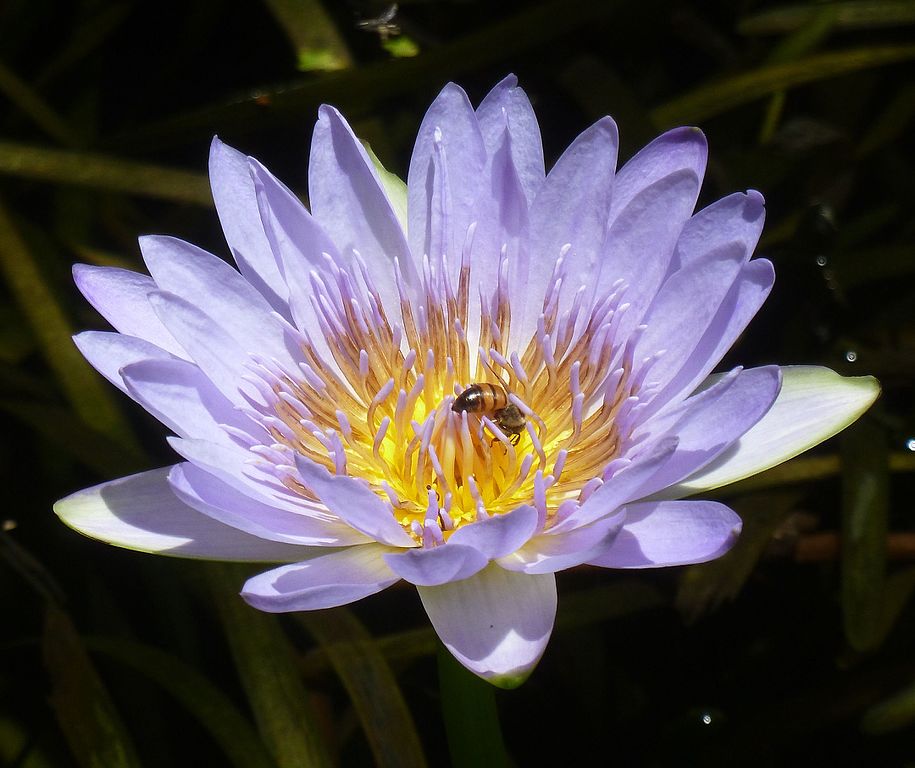
Why the Lotus Flower Is a Plant Celebrity
The lotus flower is one of the most sacred and iconic plants in the world. The striking flower is a symbolic staple for some of the most prolific cultures and religions throughout history. It’s safe to say that for thousands of years, the lotus has been a plant celebrity.
Hieroglyphics in Ancient Egypt often include lotus flowers portrayed side-by-side with important priests and pharaohs. Statues depicting sacred Buddhist figures feature the person sitting on, or underneath a lotus flower. Some of the gods and goddesses of Hinduism are associated with the flowers. The lotus flower is a recurring symbol across time and space. What makes this flower (and lotus seeds) so encapturing? To understand why the plant is so symbolic and timeless, we have to first understand its life history.
About the Lotus Flower
The white lotus (also called sacred lotus), Nelumbo nucifera, has a huge natural range. It grows in northern India up to elevations as high as 1,400 meters (4,600 feet), all the way to East Asia throughout much of China and almost all of southeast Asia.
The blue lotus, Nymphaea caerulea, is native to the Nile river and other parts of East Africa. Botanically speaking, these flowers are actually a type of water lily. But, the reasons why it’s sacred are similar to that of the white lotus. It also happens to grow in a very similar fashion to the white lotus.
N. caerulea itself is an aquatic plant. It thrives in muddy, still water and roots itself into the muck below. The long stems rise through the water and the leaves sit directly on or above the water. The huge, showy flowers bloom above the leaves, sometimes 20 centimeters (8 inches) in diameter! The petals have a special waxy coating on them which shed water and dirt. So even after blooming out of otherwise dirty, turbid water, the flower itself is perfectly pristine. One by one new flowers emerge and only last a single day. This is one of the reasons lotus flowers are so admired. Their ability to remain clean while growing out of the mud evokes persistence and spiritual purity.

Buddhism and the Lotus
In Buddhism, the sacred lotus is an important symbol of purity, spiritual awakening, and faithfulness. Statues of Buddha often show him sitting atop an open lotus flower, like the one pictured above. In the land of Buddha, there are many different colors of lotus, and each one holds a different meaning.
- Blue symbolizes a victory of the spirit over that of wisdom, intelligence, and knowledge. In Buddhist artwork, blue lotuses are never fully open as to not observe the center of the flower.
- White symbolizes Bodhi (being enlightened). It also represents mental purity, spiritual perfection, and peace.
- Purple is thought to be mystic. The eight petals of this lotus represent the Noble Eightfold Path, one of the most important teachings of Buddha.
- Red represents the heart and symbolizes love and compassion.
- Pink is considered to be the “true” lotus and is the main color of the flower according to Buddha.
Hindu Gods, Goddesses, and the White Lotus
The N. caerulea flower is sacred in Hinduism. It symbolizes beauty, fertility, prosperity, spirituality, and eternity. These are some pretty significant ideals, and all have the white lotus representing them. Many Hindu deities hold or associate themselves with lotus.
The goddess of prosperity, Laxmi, is most often depicted sitting atop an open lotus flower, with more of the blooms held in two of her four hands. The four-faced god of creation, Brahma, apparently emerged from a lotus himself. In Hinduism, the unflawed flower is divine. It emerges from muddy waters and represents enlightenment in a person with little attachments to the world.

Ancient Egypt and the Blue Lotus
Ancient Egyptian hieroglyphics depict more than one type of N. caerulea, but the blue lotus is definitely the most common and sacred of them all. The blue flower often symbolizes rebirth, due to its nature of submerging underwater and reemerging the next day. When it blooms from the water a second time, it is as clean and pure as it was the day before.
Because of the lotus flower’s ability to enter the water and return the next day, it eventually came to symbolize the sun and the creation of the world. Because the lotus is associated with rebirth, it consequentially also became associated with death. Many ancient Egyptians believed there was a way to turn into a lotus after death, so one could be reborn the next day.
Apart from the symbolic and spiritual nature of these beautiful flowers, they also had a more political significance. Upper and Lower Egypt were long separate. Eventually, the Egyptian lotus flower (abundant in Upper Egypt) and the papyrus plant (abundant in Lower Egypt) became united in symbols and hieroglyphics. Combining two of the most important plants in Ancient Egypt led to the unity of the two kingdoms.
News coming your way













